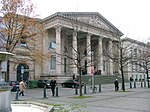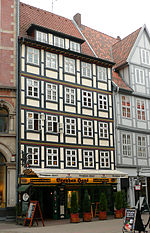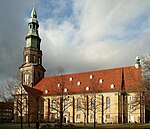Historisches Museum Hannover
1908 establishments in GermanyAutomobile museums in GermanyLocal museums in GermanyMuseums in Hanover

Historisches Museum Hannover is a historical museum Hanover, Lower Saxony, Germany, founded in 1903 as Vaterländisches Museum der Stadt Hannover. Its collections are related to the history of the city, the history of the governing House of Welf, and of the state of Lower Saxony.
Excerpt from the Wikipedia article Historisches Museum Hannover (License: CC BY-SA 3.0, Authors, Images).Historisches Museum Hannover
Am Hohen Ufer, Hanover Centre (Centre)
Geographical coordinates (GPS) Address Nearby Places Show on map
Geographical coordinates (GPS)
| Latitude | Longitude |
|---|---|
| N 52.371944444444 ° | E 9.7313888888889 ° |
Address
Stadtmauer
Am Hohen Ufer
30159 Hanover, Centre (Centre)
Lower Saxony, Germany
Open on Google Maps










